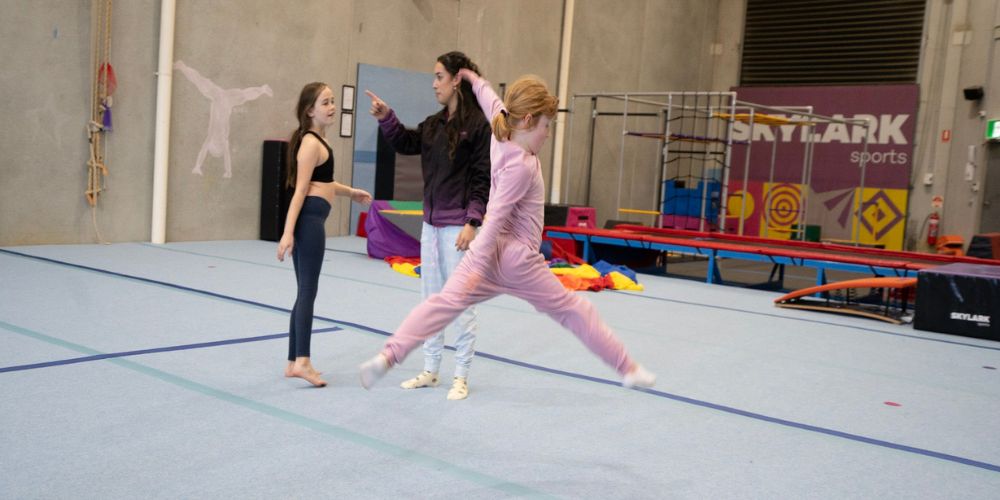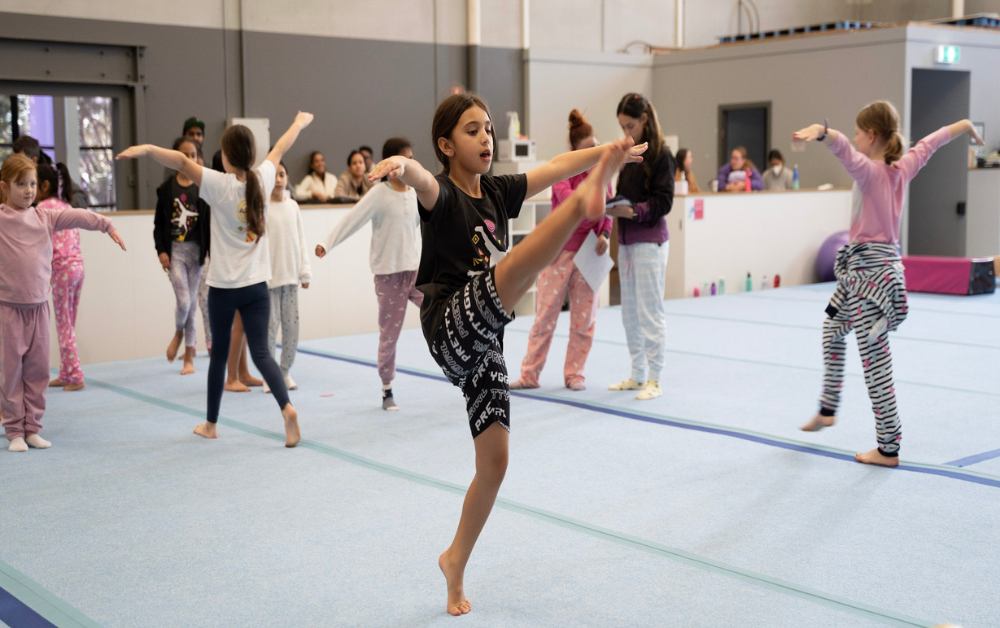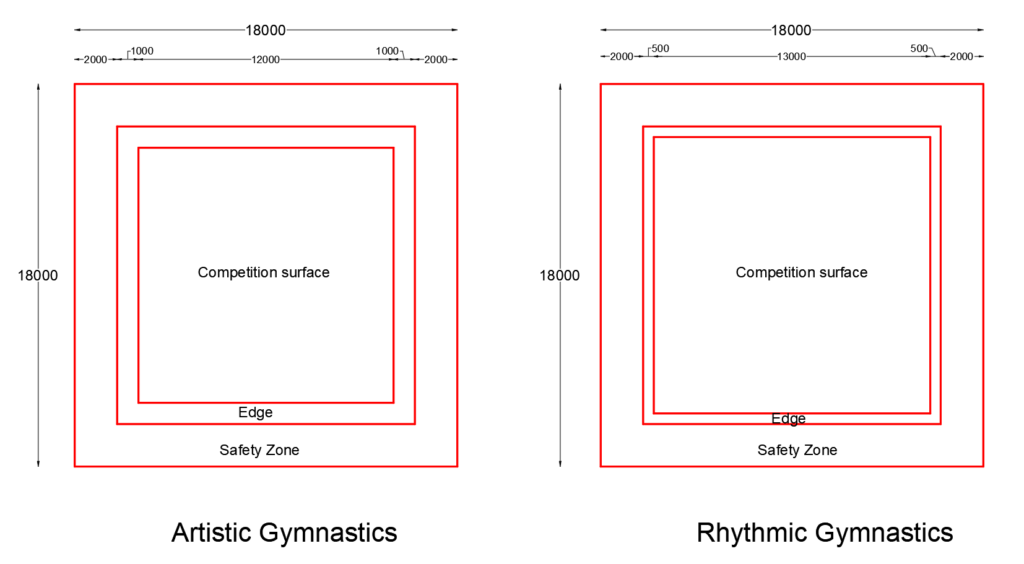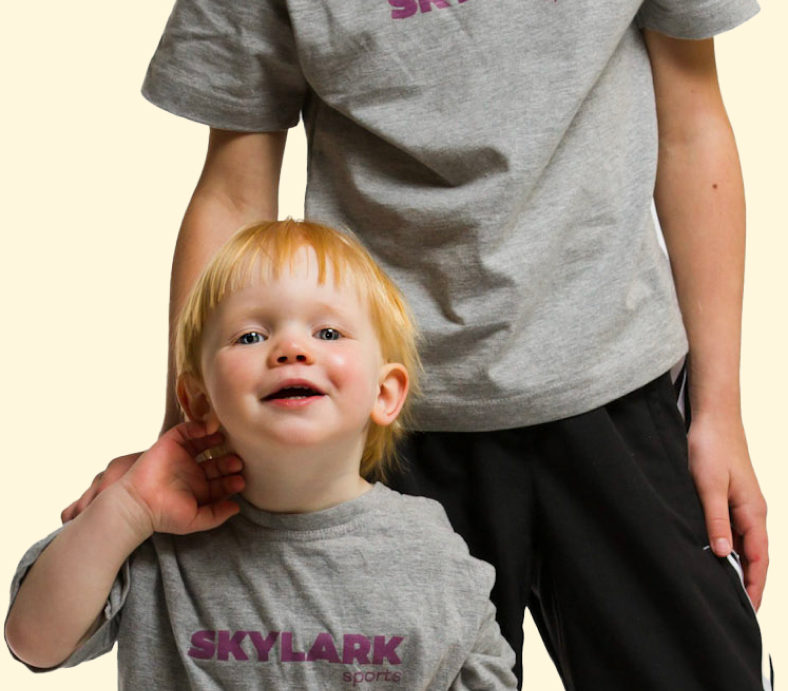Gymnastics floors are where amazing things happen—like strong moves, super flexibility, and beautiful expressions. One thing people might not think about is how big the floor is. But why does it matter?
Besides making sure our gymnasts stay on the right-sized floor, we focus on planning their routines. I've seen how the floor's size greatly affects how gymnasts perform.
When we create routines, we often think about the floor's size. It helps us decide how long tumbling tricks should be and where the dance parts fit. The floor's size is like a guide to ensuring everything looks smooth, and there's no risk of going too far out of bounds.

Why is Gymnastic Floor Important?
Before we start measuring dimensions, let's understand – why the size of the gymnastics floor matters.
Well, it's the stage where our gymnasts perform their gravity-defying feats. The right dimensions ensure a fair and challenging competition environment where precision is everything.
The Stage for Gravity-Defying Feats
These amazing performances take place on the gymnastics floor. It's more than simply a surface; it's the place where aspirations soar, and gravity is defied. The right floor gives the routine the bounce and support it needs to become a show.
Accuracy in Measurements Counts
The measurements of the gymnastics floor in every gymnastics facility are more than just numbers; they are the builders of fairness and challenge. The floor's dimensions guarantee that gymnasts always have adequate room to perform their exciting routines without interference. On the other hand, the floor mat's thickness creates the ideal foundation for performance and safety by striking a careful balance between cushioning and responsiveness.
Consistency in Competitions
Imagine a gymnast practising hard, honing each technique on their floor. The floor feels different all of a sudden on competition day. That's what standardised dimensions are meant to avoid. Every gymnast in a competition has an equal chance to succeed if their measurements are consistent. There are no surprises—just fair play, with the only goal being to demonstrate talent and craftsmanship.
The Perfect Mix of Materials
A magic combo of springs and foam layers underneath the floor, working together like a dream team. They give gymnasts the support and bounce they need. And that carpet on top? It's like the comfy shoes for gymnasts, ensuring they stick those landings and show off their best moves.
Safety Without Sacrificing Performance
In the world of gymnastics, safety is paramount. The right gymnastics floor is not only about creating a breathtaking show but also about ensuring the well-being of the performers. The carefully selected materials and construction elements offer the necessary support to absorb impact, ensuring our gymnasts can soar without compromising safety.
The Standard Dimensions
Length and Width Specifications:
According to Wikipedia:
The Fédération Internationale de Gymnastique (FIG) publishes apparatus measurements in the Apparatus Norms handbook. Both male and female competitors have the same measurements:
Artistic Gymnastics, Acrobatic Gymnastics
- Performance area: 1,200 centimetres (39 ft) x 1,200 centimetres (39 ft) ± 3 centimetres (1.2 in)[4]
- Diagonals: 1,697 centimetres (55.68 ft) ±5 centimetres (2.0 in)[4]
- Border: 100 centimetres (3.3 ft)[4]
Rhythmic Gymnastics
- Performance area: 1,300 centimetres (43 ft) x 1,300 centimetres (43 ft) ± 3 centimetres (1.2 in)[4]
- Diagonals: 1,838 centimetres (60.30 ft) ±5 centimetres (2.0 in)[4]
- Border: 50 centimetres (1.6 ft)[4]
When we talk about the length and width of a gymnastics floor, we're not talking about arbitrary measurements. Consider it the ideal size for our gymnasts to demonstrate their abilities. The length allows them to race, tumble, and awe us with their routines. The width is the sideline-to-sideline distance, which ensures they have the width to accomplish those gravity-defying acrobatics without colliding with the sidelines.
Thickness of the Floor Mat
Now, let's talk about the comfy stuff – the thickness of the floor mat. It's like the secret sauce that adds the right bounce to the floor. It's too thin, and it's like performing on concrete. It's too thick, like jumping on a trampoline – fun but not practical. The ideal thickness strikes a balance, providing a comfy landing pad for our gymnasts without sacrificing the stability needed for those landings.

Key Features of the Gymnastics Floor
Now that we've covered the dimensions let's peek under the hood of the gymnastics floor and explore its key features.
Materials used in constructing the floor
Springs and foam layers
The foam layers and springs are like the dynamic pair that works behind the scenes to create an amazing performance. The ideal bounce is provided by the springs. The magic ingredient elevates an ordinary routine into a show that defies gravity. Then, there are the foam layers, which act as a supportive auxiliary. They lessen the pressure on our gymnasts' joints and guarantee a smooth landing by absorbing the shock. Together, these materials create a floor that's not just solid; it's a trampoline in disguise.
Carpet and covering
Let's now discuss the elegant floor covering and carpet. Think of the carpet as the gymnast's go-to pair of sneakers—it gives them the traction they require for those difficult routines. Like a magic carpet for the dance floor, it provides stability for spins and leaps. The floor's armour, however, is the covering. It shields the floor from deterioration and keeps it intact despite the continual assault of acrobatics. Together, that ensures our gymnasts perform on a stable and secure platform.
Common Challenges Faced by Gymnasts on the Floor
Now, let's talk about the real hurdles gymnasts face on the floor. It's not all glitz and glam; there are challenges that every gymnast encounters during their routines.
Precision in Landings
It takes skill to nail the landing. It's not just about sticking it, but sticking it with finesse. Gymnasts strive for perfection, and landing accurately is an ongoing challenge. Whether it's a somersault or a twist, the floor requires precision, and perfecting it takes time and practice.
Adapting to Different Floor Materials
Consider practising on one sort of floor and then moving to a different one for a competition - it's the same as changing dance partners mid-performance. Each floor has its personality, and gymnasts must adjust rapidly. The grip may change, the bounce may feel different, and changing on the fly is an art in and of itself.
Getting Around the Edges of the Mat
The gymnast's safe zone is the floor mat, and navigating its perimeter might be difficult. With one incorrect step, they could find themselves out of bounds. It's a tightrope act that requires skill and spatial awareness to stay within the authorised performance space.
Tumbling Sequence Consistency
Gymnastic routines are scripted dances that include flips and twists. Maintaining a steady flow of tumbling sequences without failing is difficult. Executing each move precisely and transitioning from one to the next is important, producing a flowing and visually pleasing routine.
Dealing with Performance Pressure
The floor is not just physical; it's a mental battleground. Gymnasts often face immense pressure during competitions. The eyes of judges, the expectations of coaches, and the desire to outdo their best performances are psychological challenges that add complexity to every routine.
These challenges might seem daunting for our gymnasts, but they make gymnastics an incredible sport. Overcoming these hurdles requires skill, determination, and mental resilience. It's not just about sticking a landing; it's about conquering a series of challenges, turning each routine into a triumph of skill and perseverance.
Frequently Asked Questions
Is every gymnastics facility's floor the same?
No, the size of the gymnastics floor remains the same between contests. Still, the materials and construction may differ from one facility to the next. Some facilities may employ springs or foam layers, resulting in a slightly distinct feel. However, adhering to competition rules helps gymnasts develop their talents in varied contexts and have a consistent experience.
Why is the floor so springy?
The gymnastics floor's springiness is a precisely crafted element designed to improve performance. Springs are deliberately positioned beneath the surface to provide a powerful launchpad for gymnasts. These springs provide the lift required for flips, twists, and dynamic movements. Gymnasts may execute their routines with precision and flair because of the regulated bounce. The springiness is a testament to the marriage of athleticism and engineering, resulting in an atmosphere that allows gymnasts to push their limits while remaining in control.
Do the gymnasts get to pick the floor covering?
Gymnasts do not usually get to choose the floor covering. Choosing floor coverings is a careful process driven by competition standards. The covering, typically carpet-like, is chosen for its distinctive texture and grip to guarantee that all gymnasts have a fair and consistent experience. Consider how the level playing field would be disrupted if basketball players had to adapt to various court materials in every game. Similarly, standardised floor coverings help to ensure fair competition by allowing gymnasts to concentrate on their routines rather than adjusting to different surfaces.
Conclusion
As we finished our look into the gymnastics floor, it was clear this space was super important in gymnastics. The size rules make it fair for everyone at Skylarks Sports or other gyms worldwide.
Under the floor, springs and foam help gymnasts jump high and do cool moves. The floor isn't the same everywhere, but gymnasts are like superheroes, adapting to different floors with different grips.
So, remember, the gymnastics floor isn't just about its size. It's a stage for gymnasts to show what they can do.


